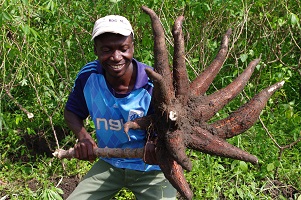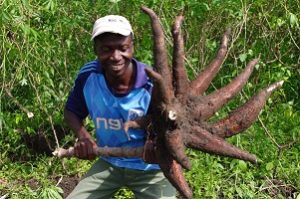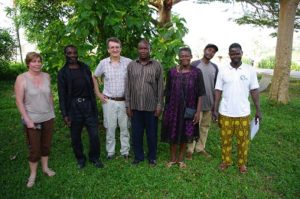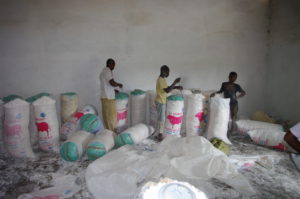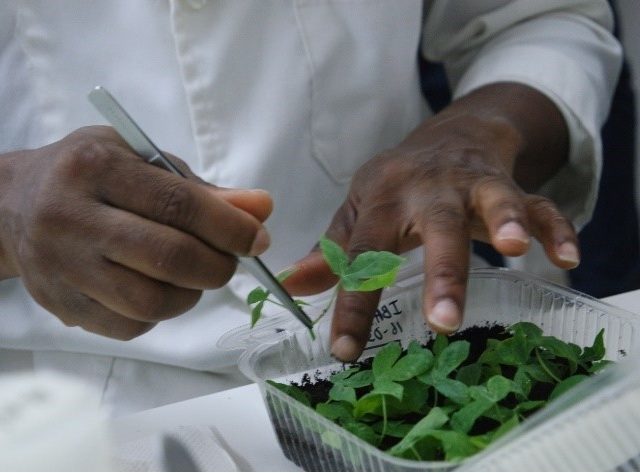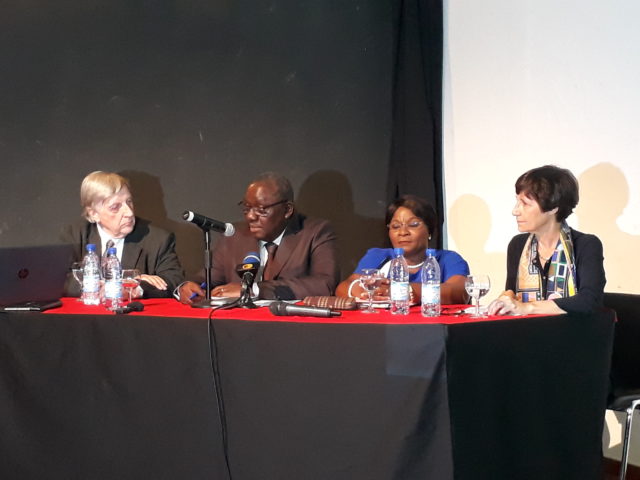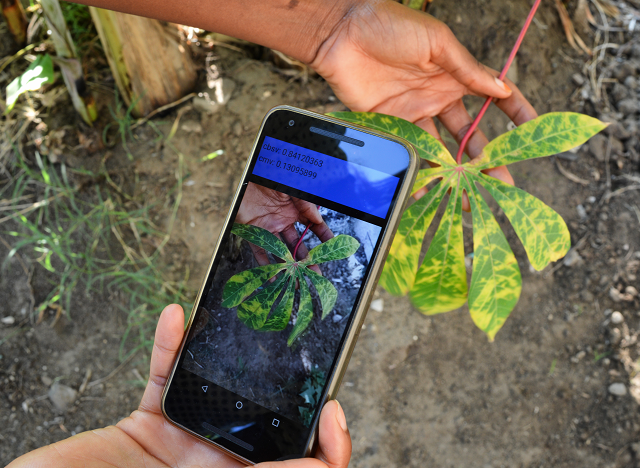By Dominique Dufour
Cameroon has a long agricultural tradition: of its 20 million people, 8 million live in rural areas, mainly from agricultural activities. I had the opportunity to go there in May under the Development Agreement and Debt Reduction in Cameroon “C2D” on a scientific and technical mission to support a proposed cassava project by the Institute of Agricultural Research for Development (IRAD). As I travelled with Marie-France Duval from CIRAD-AGAP, Montpellier, France and André Mbairanodji from the National Development Program on Roots and Tubers (PNDRT) in Yaoundé, I came to realize the dynamism of the cassava sector in the country, where 270,000 hectares are dedicated to the crop.
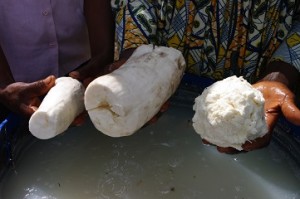 I was struck by the number of projects on cassava, and couldn’t help but wonder if better coordination might be needed. Yet they are proof of the degree of interest in cassava. After all, according to the FAO, 3.9 million tons of the crop were produced in 2011. Private companies seek cassava flour and starch; for example Nestlé, for making Maggi bouillon cubes, and Guinness, for the hydrolysis enzyme used in the production of beer. Industrial partnership agreements have been signed between these companies and the Ministry of Agriculture and Rural Development (Minader), for an estimated total demand of 10,000 tons per year.
I was struck by the number of projects on cassava, and couldn’t help but wonder if better coordination might be needed. Yet they are proof of the degree of interest in cassava. After all, according to the FAO, 3.9 million tons of the crop were produced in 2011. Private companies seek cassava flour and starch; for example Nestlé, for making Maggi bouillon cubes, and Guinness, for the hydrolysis enzyme used in the production of beer. Industrial partnership agreements have been signed between these companies and the Ministry of Agriculture and Rural Development (Minader), for an estimated total demand of 10,000 tons per year.
A major national program
As part of the policy for poverty reduction, the Government of Cameroon and the International Fund for Agricultural Development (IFAD) signed a loan agreement on July 23, 2003 for the development of the root and tuber sector through the Roots and Tubers National Development Program (PNDRT), the total budget for which amounts to around US$22 million. We were able to see some of the PNDRT’s achievements over the last 10 years.
First, the PNDRT implemented a phased distribution of IRAD/IITA improved varieties across the country, notably the 8034 clone. IRAD, the International Institute of Tropical Agriculture (IITA) and PNDRT have collaborated and included significant participation by Cameroonian farmers in order to choose the best clones – very productive, resistant to the cassava mosaic virus (CMV), and with properties sought by processors and consumers. The roots of these varieties are mainly used for processing, but some can also be eaten fresh (boiled). The leaves – rich in protein, minerals and vitamins – are also quite popular and regularly consumed in Cameroon under the name “ Mbom kwem, Kpwem/Pkwem.”
Distribution networks for planting material were also created, such as RENAMUSIM (National Network of Multipliers of Yam Seed and Cassava Cuttings), which has 50 member organizations throughout the country. PNDRT also opened several Field-Schools for Producers where more than 25,000 people – 53% women – were trained on topics such as group management and organization, financial management and simplified accounting, group sales, and management of public goods. PNDRT also oversaw the production and supply of processing machinery and the training of beneficiaries in the use and maintenance of that equipment. About 18,000 households in some 1,000 villages have benefited from this multifaceted support program – this represents approximately 108,000 people, 70% of whom are women.
Isolation and marketing: the main challenges
We met with representatives of various cassava producers/processors associations during the trip. In Mbangassina, a visit to the Federation of Unions of ICG (160 members) allowed us to see graters imported from Ghana for the production of gari as well as infrastructure provided by the PNDRT, such as drying sheds, market stalls and shops in different villages. PNDRT funded training in the production of tapioca, water fufu, chips and gari, since the traditional product in that region is couscous. As in other regions we visited, people complained about the area’s inaccessibility and the labor shortage – young people no longer want to work in the fields, so the necessity of recruiting workers from elsewhere is increasingly apparent. While the area’s women mainly sell cassava, cocoa is reserved for men, since it is more lucrative.
In Biatombo, the situation was much the same. Women are strongly represented in the producer groups. The new 8034 variety, known locally as “selected,” is well suited to the area, since it is resistant to CMV and performs well. The leaves are also good for eating. The women there mentioned that CMV is not a major problem, whereas the area’s remoteness and associated marketing problems are. They said that intermediaries, known locally as bayam sellam, fix a low price on market day. This collusion on prices works because the association has no means of transporting its members’ products to Yaoundé or the large markets in Gabon. In the rainy season, the roads become impassable. PNDRT helped build a warehouse and improve the roads, but the marketing challenges remain. The arduous task of growing the crop is also a major obstacle – each woman grows between ½ to 1 hectare of cassava, and they can’t increase that area because they wouldn’t have enough time to tend their fields, because soil preparation, planting, weeding, harvesting, processing and marketing take so much time.
Meeting with researchers from IITA and IRAD
Our visit to the IITA station on the IRAD campus in Nkolbisson allowed us to learn about the research of Rachid Hanna and Holger Kirscht, from the conservation of genetic resources in Cameroon to support of a multiplication network to analysis of the cultural role of women in the post-harvest to the study of cassava pests. A meeting with IRAD researchers who are cooperating with IITA provided an opportunity to compare notes on the new “C2D” project and organize a discussion on the needs for external expertise and improvement of existing laboratories and other infrastructure, particularly for the areas of diversity and adding value in the post-harvest. IITA’s work in Cameroon will be the subject of another post on this blog.
Dominique Dufour, Theme Leader forPostharvest Technology and Value Chains. CIRAD-Qualisud/CIAT, Cali, Colombia
